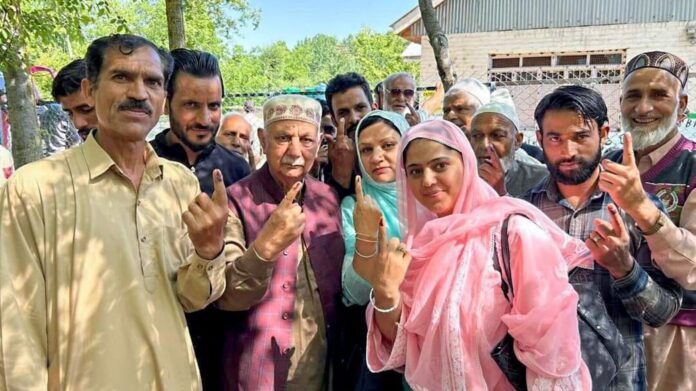All through election season, one could see several concepts of economics at play. The most startling was the ‘irrational exuberance’ witnessed on 3 June when the Sensex closed at a peak of 76,468 on the back of exit polls on 1 June which indicated a huge mandate for the ruling establishment.
The premise was that a landslide majority of 350-360 Lok Sabha seats for the NDA would accelerate economic reforms, thus reviving the Keynesian ‘animal spirits’ of industry. When the results on 4 June revealed a majority for the NDA (though not for the BJP), the market index crashed to 72,079 amid worries that reforms would slow down.
In market parlance, stocks tend to ‘revert to the mean,’ and not surprisingly, on 5 June, the Sensex closed at 74,382, which was higher than its closing level on 31 May.
The exit polls were another exercise that saw economic laws prevail. These polls went wrong in the last Lok Sabha election, as well as during recent state assembly polls. Hence, this time, all of them seem to have followed a policy of ‘adaptive expectations,’ by which the last outcome is simply scaled up in an effort by pollsters to look good.
Such expectations are considered safe because we learn from the past and assume that the present will carry on in the future. But exit polls went wrong again, like GDP forecasts (no analyst projected 8.2% growth for 2023-24).
The last two elections, in 2014 and 2019, had resulted in what would be called a ‘monopoly’ in economics. A single-party Lok Sabha majority results in monopoly power that can be wielded in every field. A coalition this time means that there would be more of an ‘oligopolistic’ structure, so we can expect some checks and balances, as every partner would have a unique strategy.
This is where ‘game theory’ comes into play, with each party trying to maximize its gains by guessing the response of the other. These dynamics are likely to prevail even after the new coalition government takes charge.
If one goes back to this year’s election campaigns, including manifestoes, promises of monetary benefits formed a common theme. These included cash transfers, apart from free power, bus rides, etc. What has been brewing for long in election seasons is the creation of a ‘moral hazard’ by so-called freebies. The hazard is that once implemented, handouts will be hard to withdraw, as it would antagonize beneficiaries who may vote for the opposition.
For individuals, what matters is what Adam Smith laid emphasis on, ‘self interest.’ While a G20 summit, Vande Bharat trains and the goal of becoming a developed country can inspire pride and lift people’s morale, votes are cast for tangible benefits. So the micro picture matters more than the macro.
Elections, however, present a market that is better than goods and money markets in terms of what economists would call ‘information asymmetry.’ Every party is eager to give out all the information needed to attract voters. This could be in the form of what has been done or what will be delivered if elected to power. With symmetric information available to all participants, this is largely an efficient market. Most economic markets are not.
A major part of election campaigns is centred on making the right noises. These are what are called ‘announcement effects.’ Just as regulators in the financial sector are thought capable of moving markets by just making announcements (talking them up or down, i.e.), voting patterns are mostly driven by political announcements.
They are credible because if parties renege on them, they would face the wrath of the market (or voters) the next time round. A plethora of announcements are made by all parties to send the electorate the right ‘signals,’ a term used by George Akerlof, who espoused a theory of signalling in the market for second-hand cars (or ‘lemons’).
The outcome patterns of election results are also interesting. There are several constituencies and states that continue to vote en masse for the same party. Here, the theoretical concepts of Veblen and Giffen goods come in. The former refers to a luxury good for which one is willing to pay a higher price, even if just for social appearances.
The latter is something one may consume more of even if its price rises because it’s a necessity. Brand loyalty induces similar inelastic behaviour. So too in the case of parties that get votes as part of a family tradition or for an appeal of ideology.
Behavioural economics has taught us that many decisions taken are based on psychology, which can be influenced by marketers, including politicians. On a lighter yet ironical note, the final results have not entirely been Pareto optimal. They were bad for India’s Left parties, which face the threat of ‘withering away,’ as Friedrich Engels prophesied of the state under communism.
These are the author’s personal views.
#Economic #theory #play #Lok #Sabha #election
